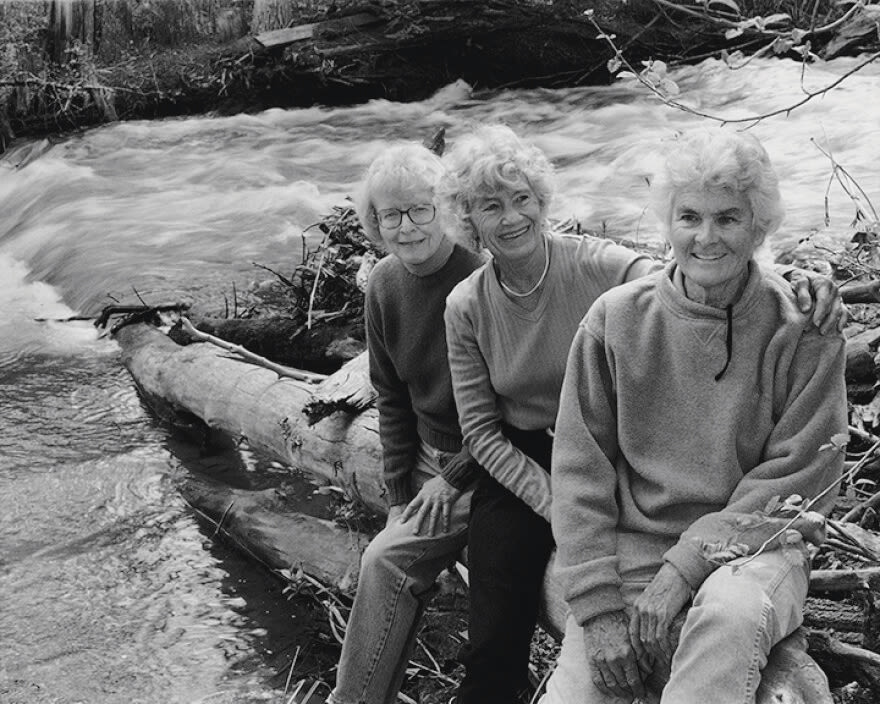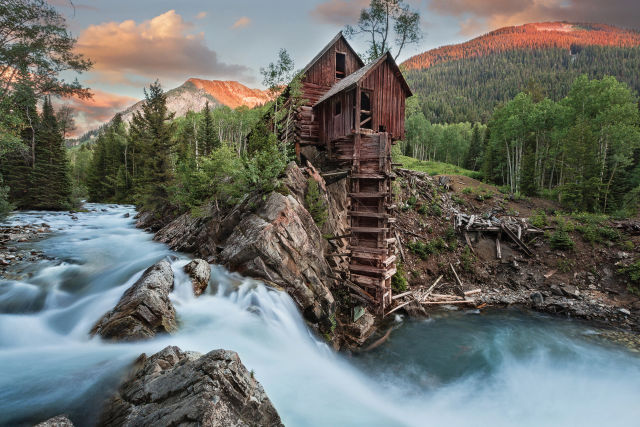Belle Époque

The Maroon Belles (l-r) in a legacy photo: Joy Caudill, Dottie Fox, and Connie Harvey

The Crystal Mill above the Crystal River, a candidate for Wild & Scenic designation
Image: Romiana Lee/Shutterstock
Fifty-five years after she and two friends founded the Wilderness Workshop, 91-year-old Connie Harvey rattles off the two rules that guided their work: “Make sure you study and know more than anybody else about your topic and what you are advocating for. Also, never lose your temper in public.”
Harvey is sitting in her home on Maroon Creek, speaking with current WW executive director Will Roush, an Aspen native whose parents also championed environmental causes here. Harvey, Joy Caudill, and Dottie Fox—the “Maroon Belles”—formed the organization partly in response to the passage of the Wilderness Act in 1964. They initially called it the Aspen Wilderness Workshop, and its objectives were no small tasks for a trio of women from Aspen trying to influence Congress in Washington, DC: obtain wilderness designation for the Collegiate Peaks, Hunter-Fryingpan, and the Raggeds areas and more than double the size of the Maroon Bells–Snowmass Wilderness. They achieved both goals by 1980, helping to define the area’s wilderness boundaries through countless hours of “ground truthing” in the field.
The founders and their families often took horse-packing trips together while becoming the faces of conservation in the Roaring Fork Valley. “We were such good friends through the work,” says Harvey, a rancher for most of her life. “They had such strong knowledge of the places we wanted to protect.” But the Belles weren’t there to make friends, she adds: “If there was something we cared about, then we made sure to be clear in what we wanted to protect and why. I didn’t mince words.” Says Roush, “I’ve heard people describe it as setting the model for how grassroots work to protect wilderness was established.”
After two decades as an all-volunteer organization dedicated exclusively to wilderness protection, WW evolved into an environmental watchdog with a scope that spans the entirety of the White River National Forest, America’s most-visited national forest, encompassing 2.3 million acres in no fewer than nine counties. It has long fought to keep the Thompson Divide free from development, and recently settled a combined lawsuit to get two Bureau of Land Management field offices in western Colorado to reassess which lands are available for oil and gas extraction leases. But one of WW’s most ambitious current campaigns is securing Wild & Scenic River designation for the Crystal, one of the last undammed rivers of its size in Colorado. If Congress passes a bill, the Crystal would remain free of diversions or dams in perpetuity. “Which, in an era of climate change and pressure to develop water,” Roush says, “is increasingly important.”
Wilderness Workshop’s roots remain intact in both purpose and people. Caudill and Fox have passed on, but their descendants, like Harvey’s, have remained involved in the mission. Cici Fox, Dottie’s daughter, serves on WW’s board. Roush, who took over for longtime director Sloan Shoemaker, now has 11 full-time staff, one part-timer, and a $1.3 million annual budget. Roughly 80 percent of the budget comes from community donations, ranging from private donors to proceeds from the Aspen Thrift Store. WW also is funded by the City of Aspen, the Town of Carbondale, Pitkin County, and the US Forest Service.
As Harvey reflects on Wilderness Workshop’s anniversary, her mind returns to the original objective. “Wilderness is the last remnant of the natural world. It’s healthy for people to experience places like that, and it’s so important for it to be preserved,” she says. “I don’t care so much whether I am remembered, but I do hope the work we did will continue to inspire future conservation and protection.”
Want to visit the Crystal River, the picturesque waterway that Wilderness Workshop is working to designate as a Wild & Scenic River? Marble-based Crystal River Jeep Tours has been guiding trips over the rugged road to historic Crystal City and the landmark Crystal Mill–one of the most photographed vistas in the state–since 1951, before overlanding was a thing and more than a decade before the Maroon Belles founded their nonprofit. Three-hour private tours via ruggedized open-cockpit Jeeps seating up to five passengers depart from Marble and traverse a mountain pass that the area’s first settlers blazed in the 19th century, through the heart of the Crystal River Valley. $500. Daily through Nov 1. 970-963-1991, smithfamilycolorado.com/crjt
Interested in volunteering/getting outside with Wilderness Workshop? Sign up for restoration projects, hikes and other events here.













































